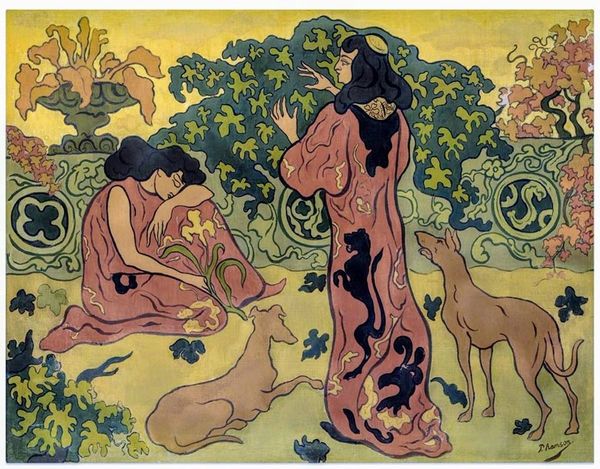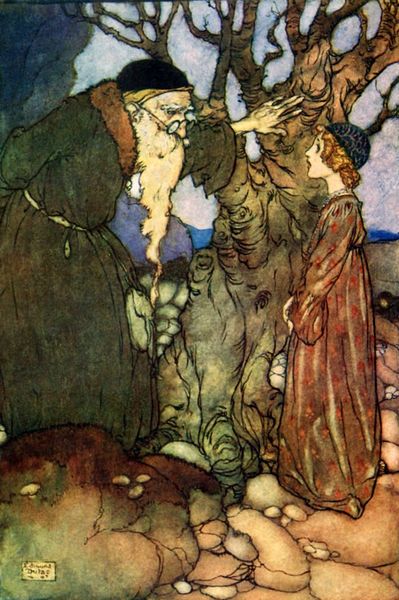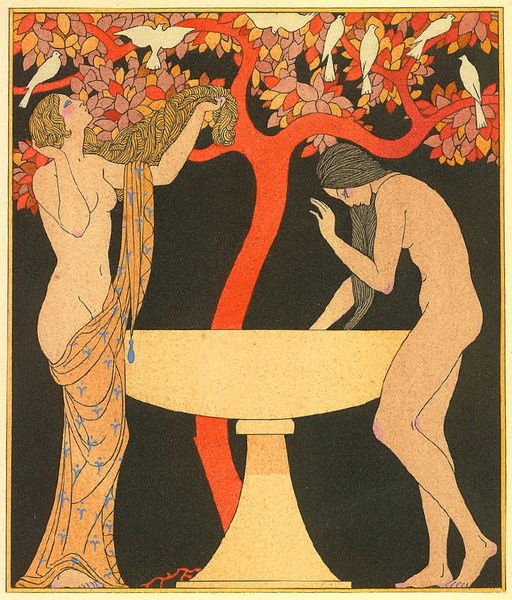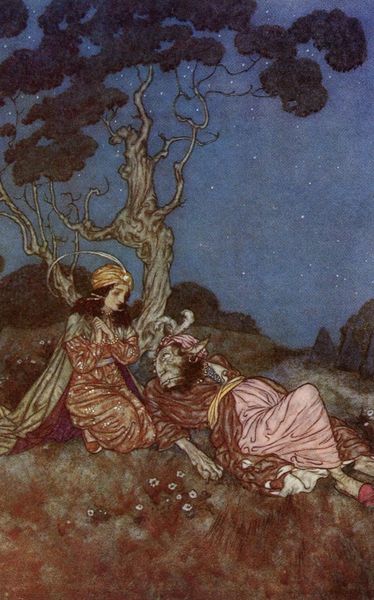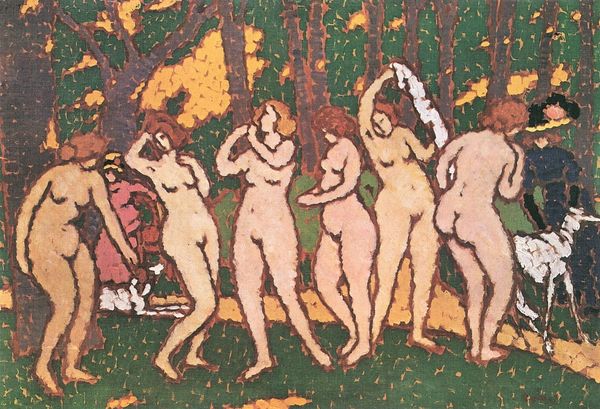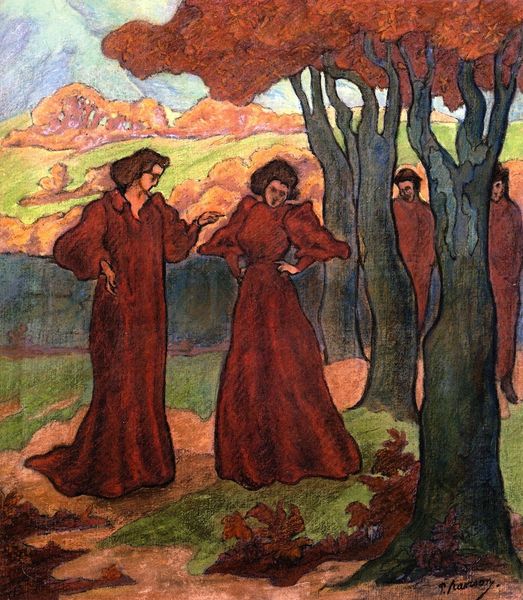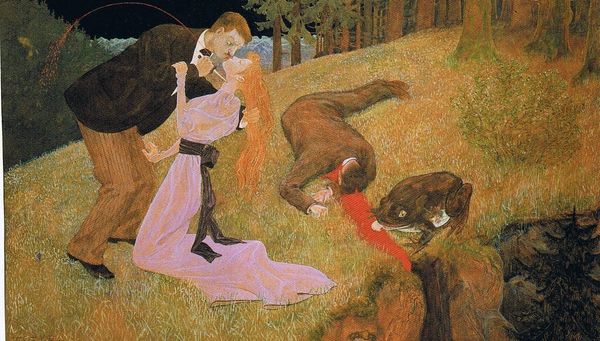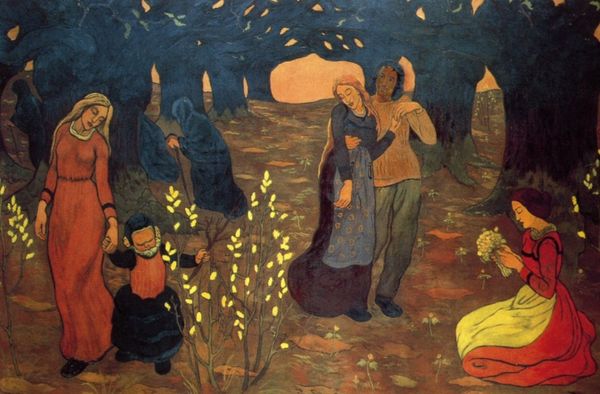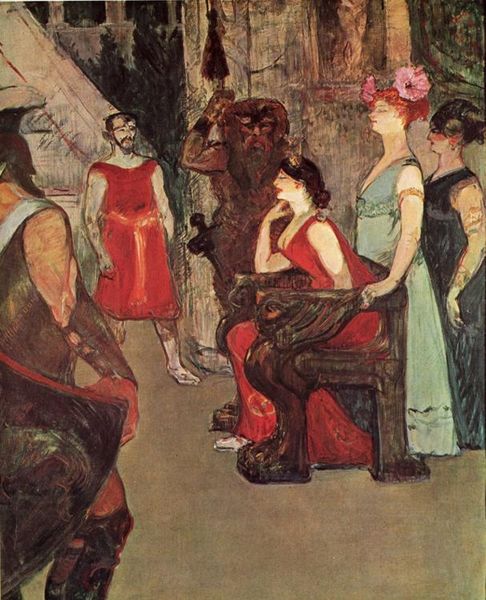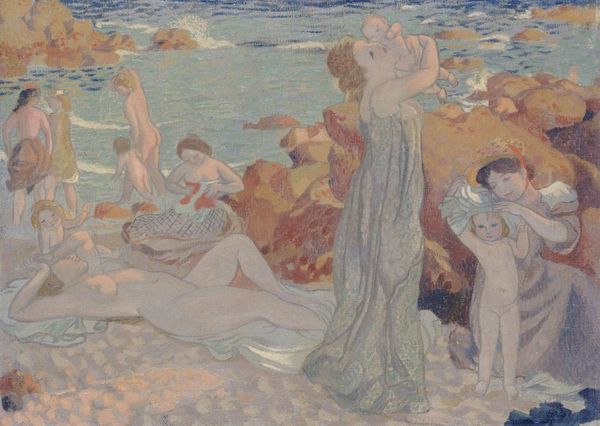
drawing, tempera, painting, oil-paint, paper, pencil, pastel, mural
#
drawing
#
narrative-art
#
tempera
#
painting
#
oil-paint
#
landscape
#
figuration
#
paper
#
intimism
#
pencil
#
les-nabis
#
surrealism
#
symbolism
#
genre-painting
#
pastel
#
post-impressionism
#
decorative-art
#
mural
#
modernism
Dimensions: 137 x 171 cm
Copyright: Public domain
Editor: This is "The Muses" painted in 1893 by Maurice Denis, using oil and tempera on paper mounted on canvas. It feels both intimate and dreamlike, the figures blending into the autumn colors of the forest. What do you see in this piece? Curator: Well, immediately I'm struck by how Denis uses a seemingly classical subject—the muses—to explore modern anxieties about the role of art and the artist in society. Consider the context: late 19th-century France, where the academy's grip on artistic taste was loosening. The Nabis, including Denis, sought a more subjective, decorative art. How do you think the setting contributes to this aim? Editor: I see what you mean, moving the muses out of some mythological past and into a very tangible, though idealized, French landscape makes them more relatable and less imposing. More a suggestion of inspiration than a divine command, perhaps? Curator: Precisely! And the Nabi's belief in art as decoration also challenges the traditional hierarchy of the art world, elevating the decorative arts alongside "high" art. The painting's flat planes and emphasis on pattern over realism signal this shift, challenging academic notions of proper art. What’s your understanding of the function of this choice of perspective? Editor: It almost flattens the scene, like a tapestry. By embracing decorative elements, Denis challenges traditional art values of perspective. That is really neat. Curator: Yes. "The Muses" becomes less about illusionistic representation and more about creating an atmosphere, a mood. It also highlights how the muses, traditionally symbols of inspiration, are integrated into the everyday. Now what will we learn about other pieces? Editor: Absolutely, the historical and cultural layers enrich our appreciation. Thanks so much!
Comments
No comments
Be the first to comment and join the conversation on the ultimate creative platform.

